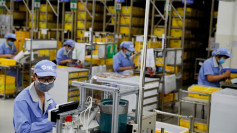Despite a number of countries opposing China's Belt and Road program, economists recently said that it is, in fact, playing a major role in driving growth in the African continent.
Anzetse Were, an economist based in the African country of Nairobi, initiated an in-depth study of China's Belt and Road Initiative. He did so after joining the African Policy Institute in 2018.
In a statement, Were said, "European, North American governments still view Africa as a poor disease-ridden, very corrupt country, but countries like China, they see Africa as a big market, which has a lot of economic opportunities."
Since the inception of the Belt and Road Initiative, China has engaged in various economic and trade talks with a number of African governments. China and several African countries have also built a large number of vital infrastructures including bridges, roads, power stations, railways, and ports. These infrastructure projects have significantly improved the transport of goods in several African countries, therefore improving basic services and the movement of goods and products.
One key project of China in Africa is the Mombasa-Nairobi Standard Gauge Railway. It stands as the largest infrastructure project since Kenya won its independence. Were also pointed out that this particular project is one of the BRI's major achievements in the African continent.
The SGR opened in 2017. Since opening its doors to the public, the SGR recorded an impressive 97 percent occupancy rate on a daily basis. The SGR uses ten freight trains that regularly transport passengers from Nairobi to the port city of Mombasa, the capital city of Kenya. The SGR has essentially cut the transportation time in half.
Another major BRI project in Africa is a ceramic factory. The factory was funded and built by a private Chinese company. It has two production lines and the whole facility covers 26 hectares. Mr. Were noted that 90 percent of the factory's employees are locals.
Before the construction of the SGR, it would take days to transport machines from Mombasa to the factory in Nairobi. The SGR has significantly improved the transport time, according to Alex Gerishom who works as the factory's administrative manager.
According to Were, the SGR brings economic activity and employment to the locals. He added that it also helps in driving local land prices up.






